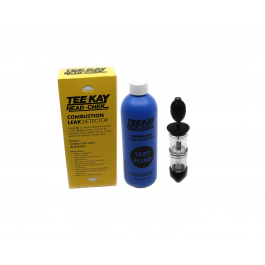@Scott71
I'm late to the party here, but a few questions I have listed below, have not been asked or even considered . . . these are THE BASICS.
1) Has the Radiator cap been pressure tested? If the cap has low spring pressure, it will allow the coolant to flow freely past the rubber seal and fill/overflow the expansion bottle, in turn emptying the radiator and engine of it's coolant.
2)Has the electric fan operation been tested? On and off, switched by the thermo switch? (Depending on weather temps and traffic/speed conditions,) If the fan doesn't run this will cause overheating and push the coolant out of the radiator.
3) Has the radiator been tested for blockage percentage? Has it been pressure tested for leakage/cracks?
If the radiator is blocked or even partially blocked, the system could/will overheat and push the coolant past the spring seat of the rad cap and empty the coolant from the radiator.
4) Also the thermostat needs checking for correct operation (yes I know he has checked it, but the previous 3 checks must be done first before assuming it's just a bad thermostat)
These are the basics to look at BEFORE jumping to conclusions about the head gasket or cracked head/cylinder lining.
Now after the basic checks have been made and all in order, it's time to check for leaking head gasket . . . pressurize the cooling system with 15psi.. is the pressure dropping or staying constant?
Also, run the engine up to normal temp with the cooling system bled (no air in system) and look for bubbles coming up to the rad filler neck.
There are two types of bubbles . .
1) Combustion pressure bubbles caused by a breach in the head gasket seal between combustion chamber and the water jacket.
2) Bubbles created by boiling the coolant.
If the bubbles appear BEFORE the coolant temp reaches 220F (boiling temp) it's definitely a head gasket issue
There is also another way to verify head gasket leaks . . the Tee Kay Head Check.
The Tee-Kay head check combustion leak detector is designed to check combustion gases in the cooling system. It works by analysing the air within the 'air cushion' above the radiator coolant level. When CO2 gas is detected in petrol engines, the blue flui

wbtools.com.au




